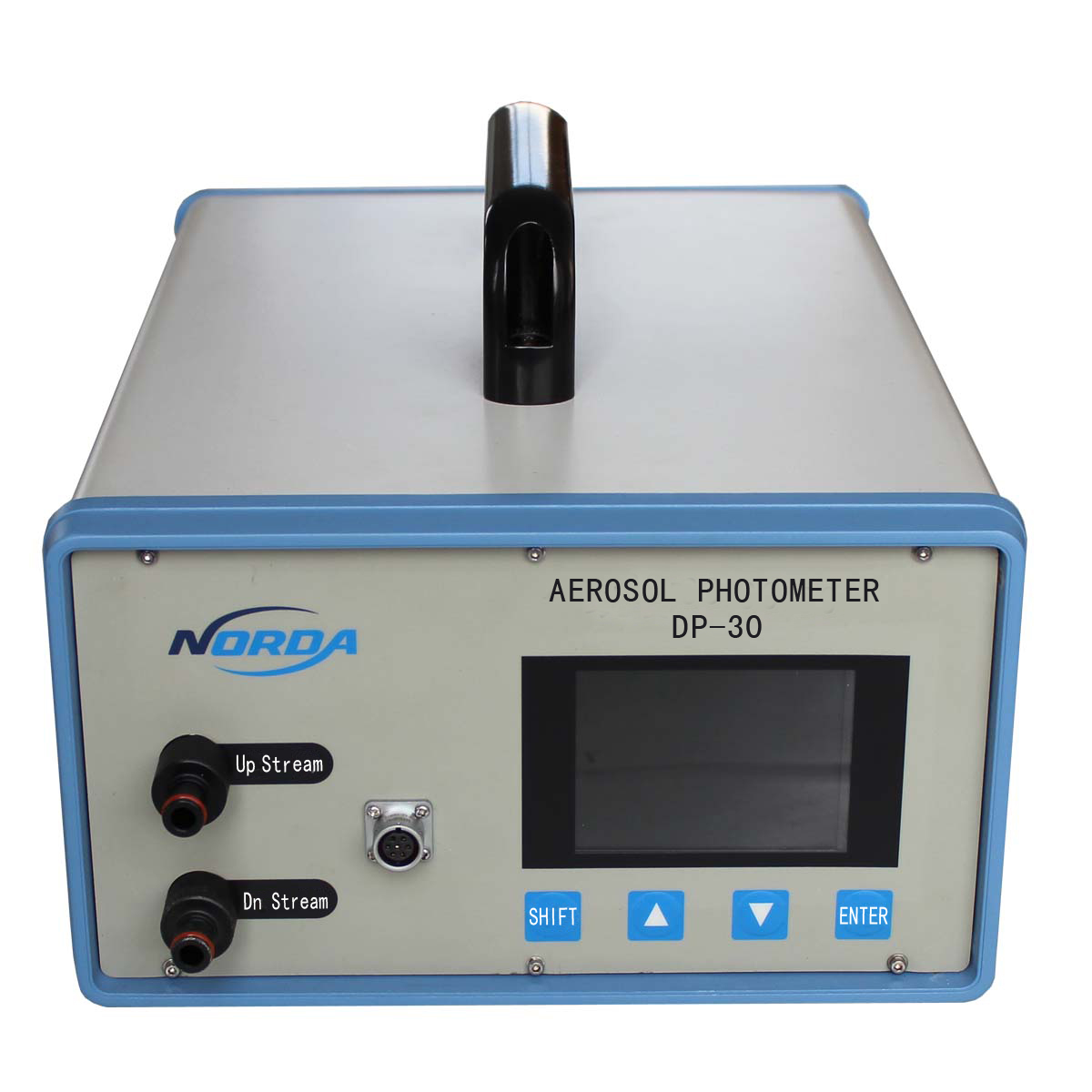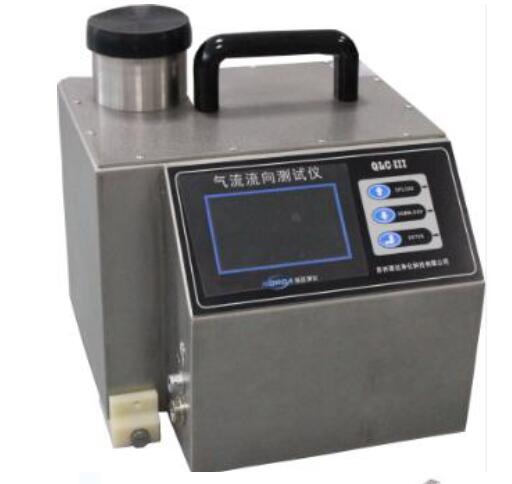Measuring the Speed of Air
Accurate measurement of airflow in a cleanroom is vital to making sure that the facility is up to code and functioning properly. Precise air velocity measurement can be used to reveal proper or improper performance of an airflow system, and steps can be taken from there to correct any potential problems.
Why measure?
“Air velocity measurement in cleanrooms is often one of the indices monitored for cleanroom performance in smaller rooms or facilities,” says Rick Gastner, Technical/Safety Manager at ENV Services Inc., Hatfield, Pa.
“There are several reasons for measuring airflow in a cleanroom, one being verification of the cleanroom performance. Closely tied to that is the air changes per hour (ACH), with different minimums required for different ISO classes of cleanliness, or in the case of USP 797, different minimums required for different room usage.”
Measuring velocity
Air velocity measurement is usually accomplished by taking velocity (linear) readings on a grid not to exceed 12 inches apart, starting 6 inches in from the edges of the filter (per IST-RP-CC002). Although a single point thermoanemometer (hot wire) reading can be done at each point, the instrument of choice is usually the square pitot array read by a micromanometer. This instrument covers an area of 1 square foot, taking multiple readings and averaging them into one. Gastner notes that, “Unfortunately, measuring velocity this way is not the most accurate measure of airflow from the filters. The velocity measurement grid referenced in the standard is 12 inches off the filter face, or as agreed upon. Most square pitot arrays come with an assortment of ‘stand-offs,’ allowing measurement at 2 inches, 6 inches, or 12 inches off the filter face, giving you different velocities at different distances. The air exiting a filter in a cleanroom ceiling will pull air from around it off the ceiling and entrain it into the airflow, skewing your reading.”
“The most accurate way to measure airflow in a cleanroom is with a balometer and shroud, taking a volumetric measure. The frame of the shroud has gasketing on it to ensure a complete seal around the perimeter of the filter for accurate measure,” says Gastner.
There are new velocity measuring instruments commercially available using infrared technology, and other multiple sensor arrays with either thermistor beads or mini hotwires, but they can be extremely expensive. Gastner notes, “Until such time as the standards that apply to the industry require a new technology, or even recognize the new instruments as legitimate and valid, the best approach is to verify with the owner of the facility what they want used for the testing, and have them sign off on that choice.”
Gastner cautions against quick inspections, however.
“Although handheld monitors exist, performing ‘spot checks’ is not a valid overall method of assessing room performance. Ductwork monitors are normally placed in the ducts by the HVAC crew as a means of monitoring the AHU performance and just one more performance index to monitor. The duct monitors are more closely tied to duct pressures and duct velocities—and now you’re getting in to static pressure, velocity pressure, total pressure, and how a velocity pressure equates to a velocity independent of the duct size, per the Industrial Ventilation handbook.”
Measuring airflow in a biosafety cabinet is an altogether different application. Hood velocities differ from cleanroom velocities, Gastner says. “In a laminar flow hood, the velocities are normally taken on a vertical plane, 6 inches off the filter face (or diffuser screen), starting 6 inches in from the edges, on a grid not to exceed 12 inches apart. In the case of a hood, the air exiting the filter has a ‘surround,’ or a structure that directs the air in a laminar fashion until it reaches the front face of the hood, at which point it diffuses into the room. On a lone ceiling terminal filter, the air tends to ‘diffuse’ the moment it exits the filter and gets hard to measure accurately.”
Monitoring performance
Gastner suggests that velocity or volume be checked periodically—normally, every six months—to help gauge the performance of the room. However, a drop in either area will be accompanied and evidenced by a corresponding drop in room pressure relative to the outer area or next room.
“The way room performance is monitored depends on several factors—size of the room or facility, capacity of the AHU (air handling unit), length of duct runs, etc.,” he says.
Doing what’s right for your cleanroom
Gastner adds a disclaimer that this is a simplified overview of air velocity measurement, and not specific enough to warrant changing an approach to cleanroom performance monitoring. Consulting with an expert is advisable when evaluating the process and options.
---------------reprint from Controlled Environment
Why measure?
“Air velocity measurement in cleanrooms is often one of the indices monitored for cleanroom performance in smaller rooms or facilities,” says Rick Gastner, Technical/Safety Manager at ENV Services Inc., Hatfield, Pa.
“There are several reasons for measuring airflow in a cleanroom, one being verification of the cleanroom performance. Closely tied to that is the air changes per hour (ACH), with different minimums required for different ISO classes of cleanliness, or in the case of USP 797, different minimums required for different room usage.”
Measuring velocity
Air velocity measurement is usually accomplished by taking velocity (linear) readings on a grid not to exceed 12 inches apart, starting 6 inches in from the edges of the filter (per IST-RP-CC002). Although a single point thermoanemometer (hot wire) reading can be done at each point, the instrument of choice is usually the square pitot array read by a micromanometer. This instrument covers an area of 1 square foot, taking multiple readings and averaging them into one. Gastner notes that, “Unfortunately, measuring velocity this way is not the most accurate measure of airflow from the filters. The velocity measurement grid referenced in the standard is 12 inches off the filter face, or as agreed upon. Most square pitot arrays come with an assortment of ‘stand-offs,’ allowing measurement at 2 inches, 6 inches, or 12 inches off the filter face, giving you different velocities at different distances. The air exiting a filter in a cleanroom ceiling will pull air from around it off the ceiling and entrain it into the airflow, skewing your reading.”
“The most accurate way to measure airflow in a cleanroom is with a balometer and shroud, taking a volumetric measure. The frame of the shroud has gasketing on it to ensure a complete seal around the perimeter of the filter for accurate measure,” says Gastner.
There are new velocity measuring instruments commercially available using infrared technology, and other multiple sensor arrays with either thermistor beads or mini hotwires, but they can be extremely expensive. Gastner notes, “Until such time as the standards that apply to the industry require a new technology, or even recognize the new instruments as legitimate and valid, the best approach is to verify with the owner of the facility what they want used for the testing, and have them sign off on that choice.”
Gastner cautions against quick inspections, however.
“Although handheld monitors exist, performing ‘spot checks’ is not a valid overall method of assessing room performance. Ductwork monitors are normally placed in the ducts by the HVAC crew as a means of monitoring the AHU performance and just one more performance index to monitor. The duct monitors are more closely tied to duct pressures and duct velocities—and now you’re getting in to static pressure, velocity pressure, total pressure, and how a velocity pressure equates to a velocity independent of the duct size, per the Industrial Ventilation handbook.”
Measuring airflow in a biosafety cabinet is an altogether different application. Hood velocities differ from cleanroom velocities, Gastner says. “In a laminar flow hood, the velocities are normally taken on a vertical plane, 6 inches off the filter face (or diffuser screen), starting 6 inches in from the edges, on a grid not to exceed 12 inches apart. In the case of a hood, the air exiting the filter has a ‘surround,’ or a structure that directs the air in a laminar fashion until it reaches the front face of the hood, at which point it diffuses into the room. On a lone ceiling terminal filter, the air tends to ‘diffuse’ the moment it exits the filter and gets hard to measure accurately.”
Monitoring performance
Gastner suggests that velocity or volume be checked periodically—normally, every six months—to help gauge the performance of the room. However, a drop in either area will be accompanied and evidenced by a corresponding drop in room pressure relative to the outer area or next room.
“The way room performance is monitored depends on several factors—size of the room or facility, capacity of the AHU (air handling unit), length of duct runs, etc.,” he says.
Doing what’s right for your cleanroom
Gastner adds a disclaimer that this is a simplified overview of air velocity measurement, and not specific enough to warrant changing an approach to cleanroom performance monitoring. Consulting with an expert is advisable when evaluating the process and options.
---------------reprint from Controlled Environment




站自己上傳/AG1800.jpg)
站自己上傳/AG60上傳.jpg)
站自己上傳/pbs-100.jpg)
站自己上傳/PBS-E.jpg)
站自己上傳/IA.jpg)
站自己上傳/QLC-I.jpg)




